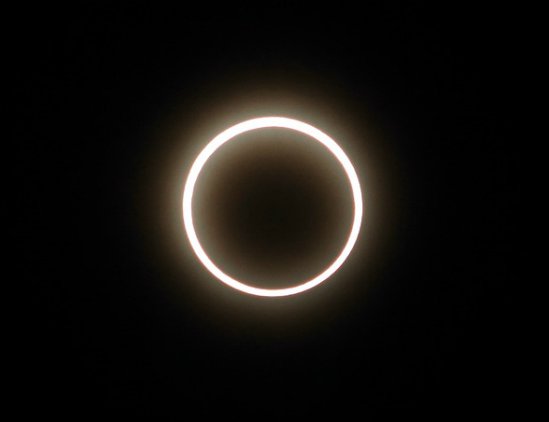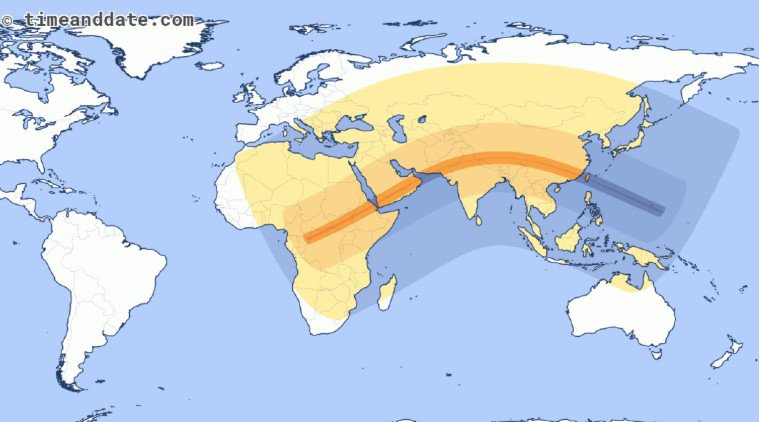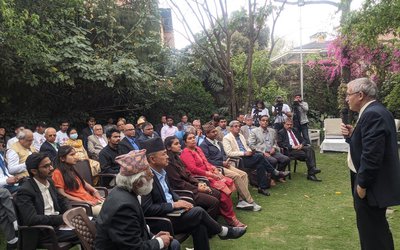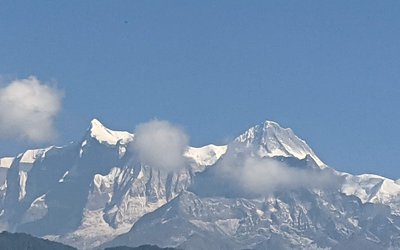
The first solar eclipse of the year 2020 will fall on June 21. The first solar eclipse or Surya Grahan of the year 2020 will fall on June 21. This will be an annular solar eclipse where Moon will cover Sun from the center leaving the outer rim visible, thus creating a ring of fire.
When will the first solar eclipse of 2020 take place? Where will it be visible?
The June 21 solar eclipse will start at 9:30 AM NST and will go on until 3:19 PM NST. The maximum eclipse will take place at 12:25 NST. The eclipse will be visible from much of Asia, Africa, the Pacific, the Indian Ocean, parts of Europe and Australia More
A solar eclipse occurs when the moon gets between Earth and the sun, and the moon casts a shadow over Earth. It happens because the moon is far away from Earth and its relative size is not big enough to entirely cover the sun.
The eclipse starts at one location and ends at another, checkout the Surya Grahan timings in Nepal.
Kathmandu, Nepal
Partial solar eclipse visible (85.98% coverage of Sun) Magnitude: 0.8909 Duration: 3 hours, 30 minutes, 41 seconds Partial begins: Jun 21 at 10:53:56 am
Maximum: Jun 21 at 12:41:03 pm Partial ends: Jun 21 at 2:24:37 pm
The first location to see the partial eclipse begin: 09:30:58
The first location to see the full eclipse begin: 10:32:45
Maximum Eclipse: 12:25:04
"In Nepal, the obscuration of the Sun by the Moon at the time of the greatest phase of the annular eclipse will be nearly 98.6%. Obscuration of the Sun by the Moon at the time of the greatest phase of the partial eclipse will be 75 to 95 percent depending upon the place according to scientists.
A solar eclipse occurs on a new moon day when the moon comes in between Earth and the sun, and the moon casts a shadow over Earth. Here is a list of the solar eclipse timings in Kolkata, Delhi, Mumbai, Chennai, Bengaluru and its effects.
Duration: 3 hours, 19 minutes
It is believed that astrological changes occur due to solar eclipses.
This year in 2020, a total of six eclipses is expected to take place, out of which two lunar eclipses have already occurred in January and June. The second and last solar eclipse of the year 2020 will occur on December 14. The third lunar eclipse of the year is expected to fall on July 5, 2020.
What is a solar eclipse?
During a Solar eclipse the Sun, Moon and Earth are in a straight line and the Moon comes between the Sun and Earth, due to which the rays of the sun are blocked from reaching the Earth. This darkens the sky as if it is night time.
There are three kinds of solar eclipses: Total, Partial and Annular. During a total solar eclipse, the Moon fully blocks the Sun, with the people on Earth unable to see it and there being complete darkness. During a partial solar eclipse, the Moon covers a part of the Sun making a recent shape sun visible to the people. Lastly, during an annular solar eclipse, the Moon covers the Sun fully, but due to its relatively small size, the out ring of the Sun is completely visible to the people.
Interesting fact: A solar eclipse usually occurs around two weeks prior or after a lunar eclipse. Usually, there are two eclipses in a row. However, there have been times that we have seen three eclipses one after the other.
When is the next solar eclipse?

There will only be two solar eclipses this year. The first one will take place on June 21, whereas, the next one will take place on December 14. The next solar eclipse will be a total solar eclipse, during which the Moon will completely block off the Sun’s rays and cast a shadow over the Earth. According to timeanddate.com, the next solar eclipse will be visible from South America, Pacific, Atlantic, and parts of the Indian Ocean, Antarctica, and Africa.
How to watch
Although this isn't a total solar eclipse, you still need to watch the eclipse using safety measures.
"Because the Sun is so incredibly bright, it is still too bright to look at with unprotected eyes," Young said. "You need safe solar viewing glasses or special filters for use with telescopes or binoculars."
Any glimpse of the sun's brightness is not only uncomfortable -- it's dangerous. Looking directly at the powerful brightness of the sun can cause damage to the retina, the light-sensitive part of the eye. Even the smallest amount of exposure can cause blurry vision or temporary blindness. The problem is, you won't know whether it's temporary at first.
Whether you use the cardboard eclipse glasses or a handheld card with a single rectangular view, the most important feature is the filter. Make sure your eclipse glasses meet the ISO 12312-2 international safety standard. Eclipse glasses can be worn over regular eyeglasses.
To test for safety, the only thing you can see through a safe solar filter is the sun itself. If you look through and the sun is too bright, out of focus or surrounded by a murky haze, or if you can see things like ordinary household lights, the glasses aren't safe.
If you're tempted to reuse eclipse glasses that are three years or older, they were made before the international safety standard was in place and come with a warning that says you can't look through them for more than three minutes at a time. These should be discarded, according to the American Astronomical Society
- Japan Hands Over The Community Center For Disaster Prevention
- Apr 23, 2024
- Hanuman Jayanti 2024:Ritual And Significance
- Apr 23, 2024
- Upper Arun And Dudhkoshi Hydropower Projects Will Use TBM, With Parallel Construction Of Other Infrastructure: MD Ghising
- Apr 23, 2024
- Weather Forecast: Brief Rain And Thunder Showers Is Likely At Few Places Of Gandaki, Sudurpaschim And Karnali
- Apr 23, 2024
- Madhu Kumar Marasini Has Been Appointed As The New Finance Secretary
- Apr 22, 2024
















